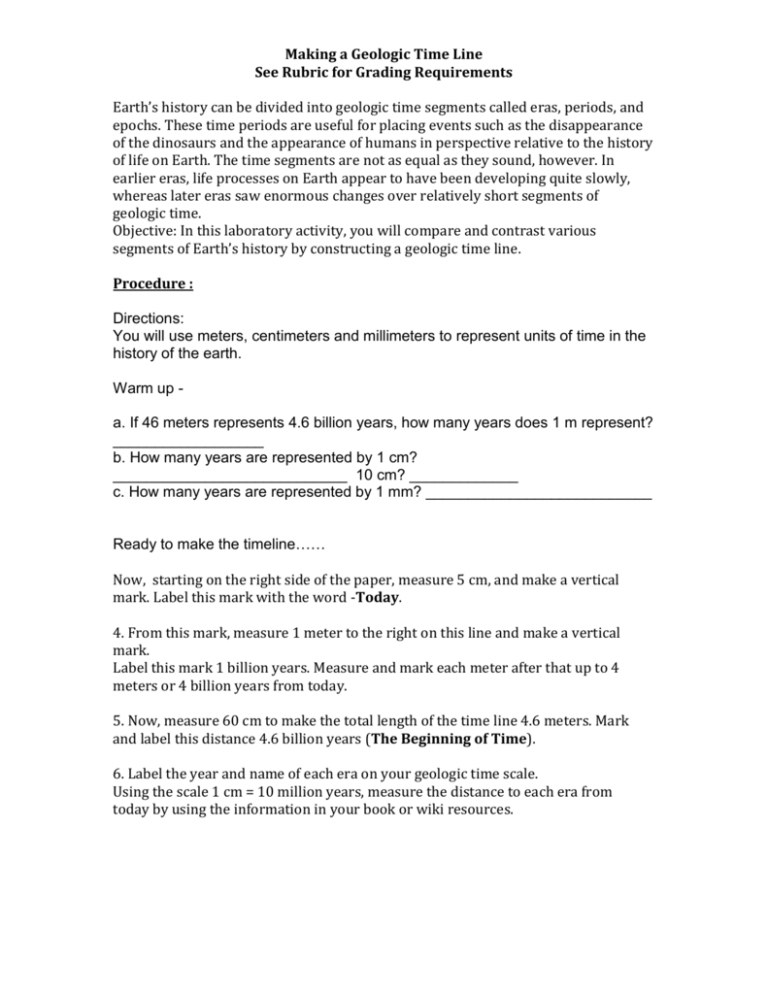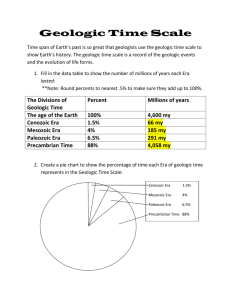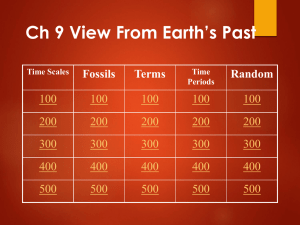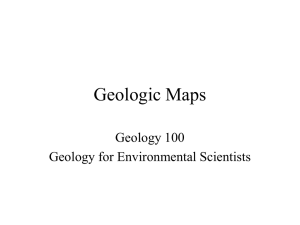Making a Geologic Time Line
advertisement

Making a Geologic Time Line See Rubric for Grading Requirements Earth’s history can be divided into geologic time segments called eras, periods, and epochs. These time periods are useful for placing events such as the disappearance of the dinosaurs and the appearance of humans in perspective relative to the history of life on Earth. The time segments are not as equal as they sound, however. In earlier eras, life processes on Earth appear to have been developing quite slowly, whereas later eras saw enormous changes over relatively short segments of geologic time. Objective: In this laboratory activity, you will compare and contrast various segments of Earth’s history by constructing a geologic time line. Procedure : Directions: You will use meters, centimeters and millimeters to represent units of time in the history of the earth. Warm up a. If 46 meters represents 4.6 billion years, how many years does 1 m represent? __________________ b. How many years are represented by 1 cm? ____________________________ 10 cm? _____________ c. How many years are represented by 1 mm? ___________________________ Ready to make the timeline…… Now, starting on the right side of the paper, measure 5 cm, and make a vertical mark. Label this mark with the word -Today. 4. From this mark, measure 1 meter to the right on this line and make a vertical mark. Label this mark 1 billion years. Measure and mark each meter after that up to 4 meters or 4 billion years from today. 5. Now, measure 60 cm to make the total length of the time line 4.6 meters. Mark and label this distance 4.6 billion years (The Beginning of Time). 6. Label the year and name of each era on your geologic time scale. Using the scale 1 cm = 10 million years, measure the distance to each era from today by using the information in your book or wiki resources. Using the same scale, calculate the distance from Today to the beginning of each geologic period on your geologic time scale. Once you are certain of your calculations, measure, mark, and label the time span and name of each geologic period on your geologic time line. 3. Record the eras in 2 cm vertical red lines and time periods in 1 cm vertical blue lines, along the bottom of the tape. Quaternary Period= _____million years ago = ______m Tertiary Period= _____million years ago = ______m Cretaceous Period= _____million years ago = ______m Jurassic Period= _____million years ago = ______m Triassic Period= _____million years ago = ______m Permian Period= _____million years ago = ______m Pennsylvanian Period= _____million years ago = ______m Mississippian Period = _____million years ago = ______m Devonian Period= _____million years ago = ______m Silurian Period= _____million years ago = ______m Ordovician Period= _____million years ago = ______m Cambrian Period= _____million years ago = ______m Refer to the handout on Geologic Time Line Eras a. Cenozoic Era = 65 million years ago = ______________ cm from Today b. Mesozoic Era = 245 million years ago = ______________ cm from Today c. Paleozoic Era = 545 million years ago = ______________ cm from Today d. Precambrian Era = 4.6 billion years ago = ______________ cm from Today 7. Label the major events of each era on your geologic time scale by using the basic geologic time scale as a guide. Cut out each of the major events and paste them onto the geologic time scale. (Making it easier on you: Layout each of the events on the geologic time scale before pasting them on the scale – the pieces are easier to move without the glue)








